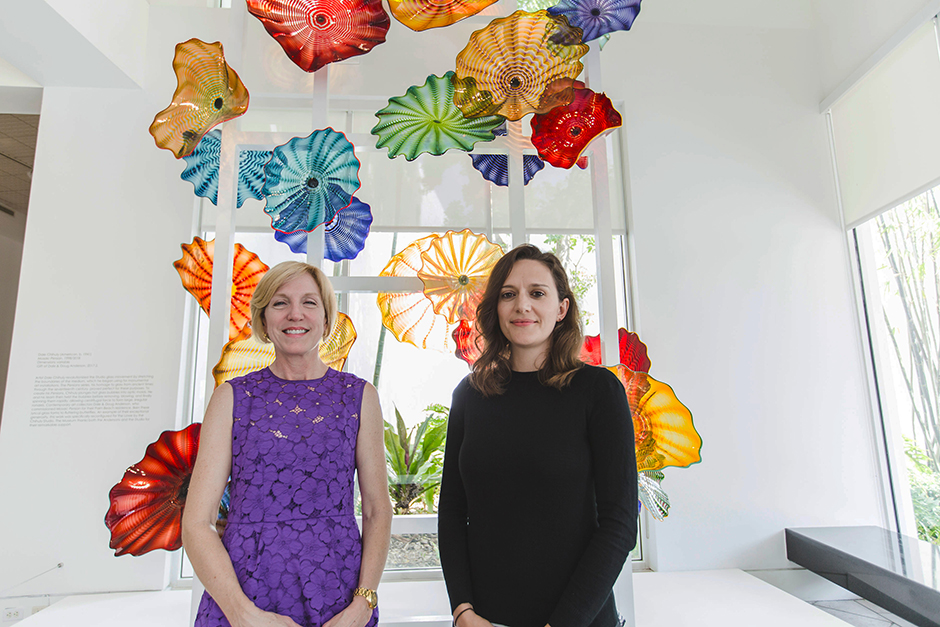Turning Art into Science
A&S News, 06-10-2019

Take the sciences and the arts and intertwine them with a rich, creative encounter and you get some amazing projects in and out of the classroom led by Assistant Professor Amy M. Scott and Associate Professor Karen Mathews.
With the help of a grant from the Andrew W. Mellon Foundation, Mathews, from the Department of Art and Art History, and Scott, from the Department of Chemistry, were able to take a traditional classroom experience and change it into a cross-disciplinary and transformative encounter with a collection of artworks, graphics, and scientific images at the University of Miami’s Lowe Art Museum.
Scott’s winning proposal, entitled “The Science of Glass: Structure and Optics,” captured the attention of a CREATE grant, which is funded by the Mellon Foundation. Her proposal centers around the synergistic merging of chemistry and art through scientific explanations relating chemical structure and function, highlighting seven selected pieces of glass artwork in the Lowe Art Museum.
Scott says “there are over 10,000 ways to chemically produce art glass that correlate to the desired physical, optical, and mechanical properties that give rise to artistic interpretation.” This work offers a rare but insightful explanation behind some of the artistic renditions within the glass collection at the Lowe that align with UM’s CREATE collections-based exhibitions, with customized graphic design and incorporation of real scientific data by Scott.
With a completion date set for later this year, the exhibit will align with the topics learned in first- and second-year chemistry undergraduate courses. Students from diverse academic disciplines will be invited to attend the exhibit and provide critical feedback on the cross-disciplinary educational approach through an interactive questionnaire.
Through their engagement with exhibits at the Lowe, undergraduate students will experience a better understanding of the chemical structure of glass, specifically “from an atomistic view of the three-dimensional placement of individual atoms and elements,” says Scott, who explains further that students should have a better grasp of “the optical effect that gives rise to color, iridescence, and birefringence that are related to certain elements and defects within the 3D structure.”
Across campus, Mathews’ students engaged in a similar activity with the integrations of technology. Mathews also introduced her undergraduates to the halls of the Lowe Art Museum to interact with ancient artworks. Her eye-catching proposal for this project was also one that commanded the attention of the CREATE grant committee. Under the banner “Animating Antiquity,” students from the Art and Art History and Classics Departments merged a tactile experience of the art they explored with the technologies of 3-D modeling and printing of those ancient art pieces.
“The Animating Antiquity project combines innovative technology with pedagogy and community outreach to provide students with important professional skills and expertise while expanding the boundaries of the museum and connecting people and objects in interactive environments,” says Mathews.
Students from Mathews’ art history course were exposed to new technological innovations in museum management. They also created and printed their own models to enhance community learning and interactive participation with museum artifacts. An exciting aspect of doing this included photographing some of the artifacts from the permanent collection of the Lowe using a portable photo-studio and turntable that allowed them to capture art objects from different angles to create its 3-D models of Lowe antiquities.
Overall, successful projects like these give visibility to CREATE grants initiatives. University of Miami professors interested in a more interactive classroom experience around object-centered learning can turn to CREATE to make this a reality. Awarded grants, which can be as much as $6,000, encourage collaborations with classes and the extensive resources housed in the University of Miami Libraries and the Lowe Art Museum.